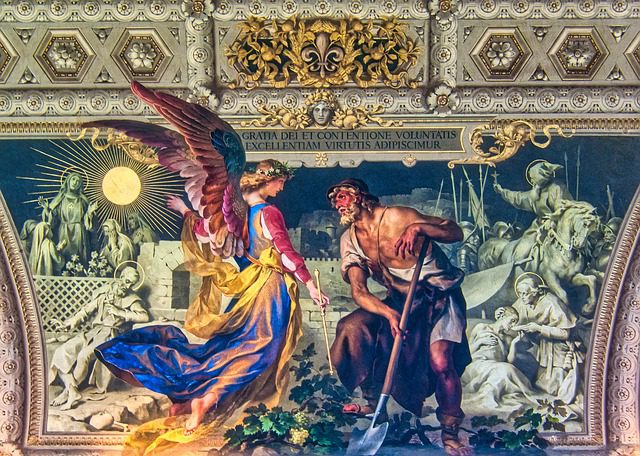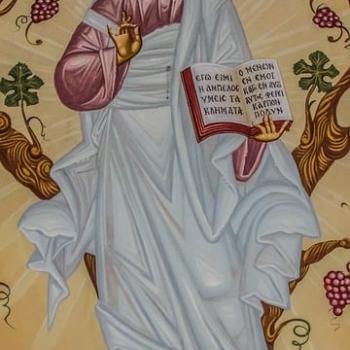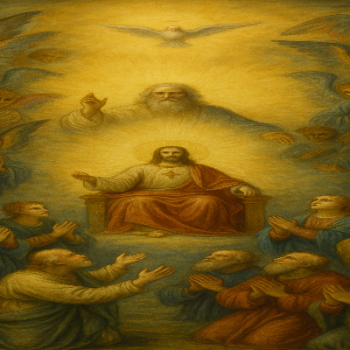
The beauty of the Catholic faith has inspired and created some of the greatest works of art in history. From the art of Michelangelo and Donatello to crucifixes and rosaries, the use of art and symbols are an indispensable part of understanding Catholicism.
Often too, art and images provide a path to bringing people to the Catholic faith as well as disposing individuals to worship. Yet, their use has also been met with criticism and controversy.
In the following exposition, I will explore the various forms of art, symbols, and images used by the Catholic Church and individual Catholics. Finally, I will examine the purposes and benefits of their use and discuss the charge of idolatry in their use.
Art And Images In Catholicism
There have been many definitions of art. For Plato, it was mimetic (imitative) and meant to represent the Forms. For Kant, art was an end in itself. The Aristotelian view saw art as imitating the essence of nature.
For the purposes of this work, I will define art within the context of beauty and beauty within the framework of the transcendentals. Transcendentals express a distinct attribute of every being insofar as it exists, revealing something unique about the nature of all reality. As such, they are foundational to all things. Beauty is the property that makes a thing pleasing to behold. In this sense, beauty becomes objective since a thing is beautiful to its creator, which is God.
Depictions of beauty in the Catholic tradition can take many forms. Beauty can be seen in architecture, as in the Sistine Chapel or Chartres Cathedral, or it can be seen in art, as in Raphael’s Transfiguration or Michangelo’s statue of David. The purposes of this art can also have varied purposes.
The use of images can often predispose one to become open to the religious experience while also acting as aids to instruction and devotion. Moreover, art can communicate the truth of Catholicism through beauty. For this reason, Saint John Damascene wrote, “The beauty of the images moves me to contemplation, as a meadow delights the eyes and subtly infuses the soul with the glory of God.”
As the mystical body of Christ, the Catholic Church is what Cardinal Avery Dulles called a “revelatory symbol.” That is, the Church can be a form by which God reveals Himself to human beings. This is done predominantly through the sacraments. In addition, art can be used to display something of the beauty of the Kingdom of God, thus drawing people to the Church, and by extension, to God.
The use of images and art can be beneficial to the individual Catholic, as well. These can often take the form of crucifixes, rosaries, the Stations of the Cross, and the veneration of relics. While these acts of devotions are not intended to replace the liturgy, they can aid one’s spiritual advancement.
The Value And Purpose Of Images And Art
In response to disputes over the use of religious art, the Council of Nicaea in 787 formalized and consecrated the use of sacred images. The Council determined that the use of art should be afforded the same level of sacredness given to the cross. This meant that Churches had the right to display art and images as objects of veneration.
As established by the Council, sacred images could be painted, made in the form of mosaics, carved, or woven. The veneration of holy images evolved over the centuries in many forms of popular devotion and has undoubtedly contributed significantly to the spread of the Catholic religion.
Art can idealize, glorify, suggest and tell the story of Catholicism. Their use keeps traditions alive and makes it easier for individuals to visualize a concept or event that is otherwise difficult to imagine through mere words. Art and imagery can speak to the minds and hearts of different individuals. Because of this, they are indispensable in worship, prayer, and catechesis.
Despite the benefits that art and beauty can have in bringing people to God as well as aiding in the individual spiritual life, the use of art and images have not been without criticism.
Does The Use Of Art Constitute Idolatry?
One of the most common attacks on the Church is that the use of images amounts to idolatry. Idolatry is worshiping a created thing instead of God (See Catechism of the Catholic Church, Paragraph 2113).
Exodus 20:4-5 is often cited to attack the Church’s use of images. The verse reads: “You shall not make for yourself an idol or a likeness of anything in the heavens above or on the earth below or in the waters beneath the earth; you shall not bow down before them or serve them.”
There are two points to address regarding Exodus 20:4-5. First, the command is not universal. As an example, I will point to Exodus 25. This chapter describes how God instructs the Israelites on the building of a Menorah, as well as how the Ark of the Covenant is to be designed. The instructions include making gold cherubims that are to adorn the Ark of the Covenant. (See Exodus 25:18-19).
Numbers 21:8-9 provide another Biblical example of the use of an image. When snakes plague the Israelites, God tells Moses to “make [a statue of] a fiery serpent, and set it on a pole; and everyone who is bitten, when he sees it shall live. So Moses made a bronze serpent, and set it on a pole; and if a serpent bit any man, he would look at the bronze serpent and live.” As one had to look at the bronze serpent to be healed, it is clear that God allows the ritual use of images (in this case, a statue).
All of this is to point out that the use of art is not illicit. What is forbidden is the worship of anything that is not God. For the ancient Israelites, idolatry often involved worshiping the various pagan gods. Modernity has replaced those pagan gods with things such as money, power, and pleasure. For this reason, the Catholic Church teaches that “An idolater is someone who transfers his indestructible notion of God to anything other than God” (See Catechism of the Catholic Church, Paragraph 2114).
Conclusion
The Catholic faith is breathtakingly beautiful. This beauty is not in vain. The various images, art, and sacramentals have a tremendous effect on bringing people to Catholicism and, by extension, bringing them to God.
In the preceding work, I have sought to examine the purposes and benefits of art and beauty to the Catholic experience. I have also shown why the claim that their use is a form of idolatry is without merit. Indeed, depictions of beauty can bring people to God, and is that not what Catholicism is all about?












